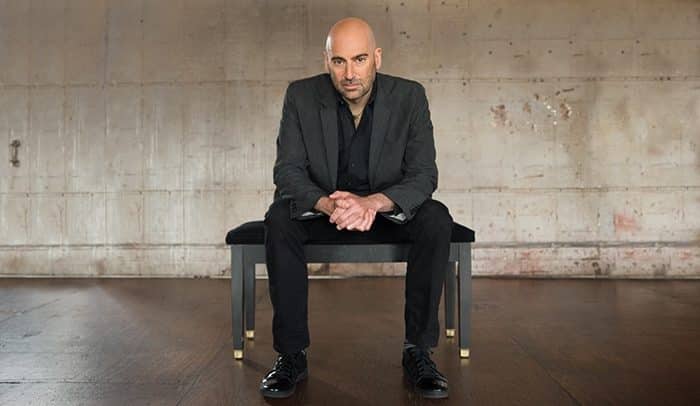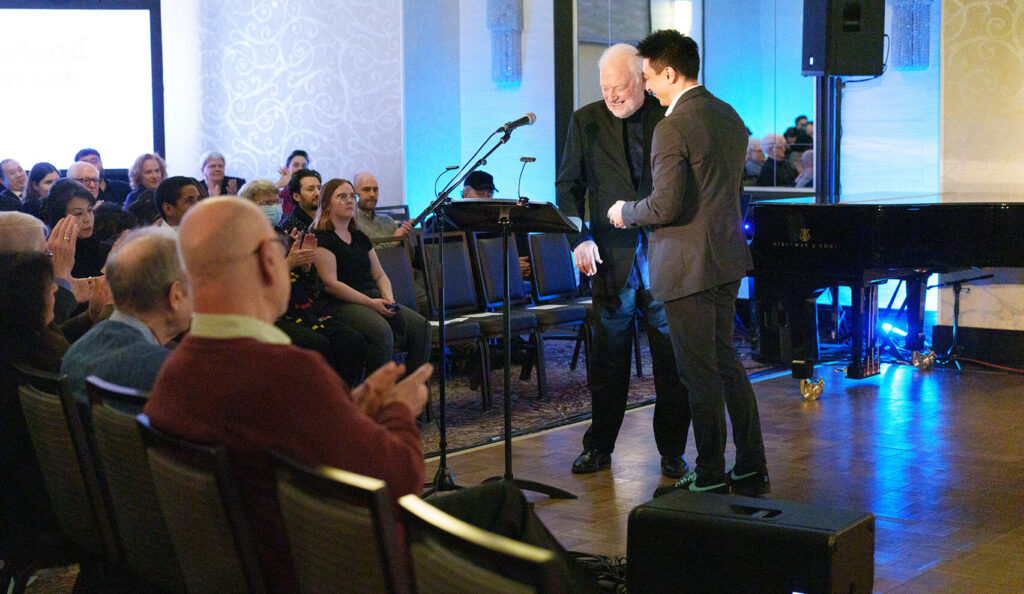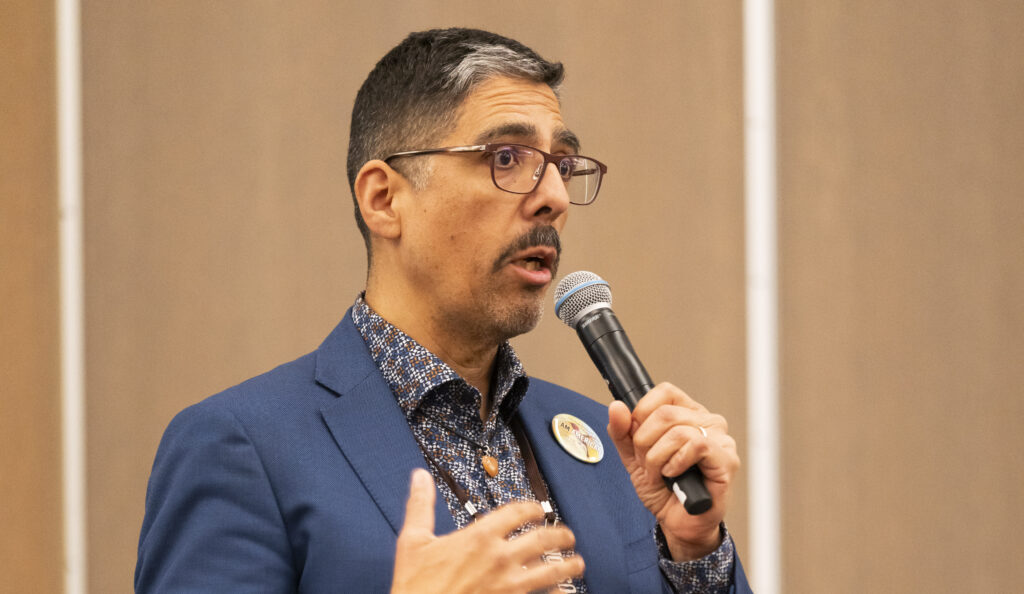Meet the Grantee: Ryan Cohan
Composer, pianist, and multi-CMA-grant recipient Ryan Cohan shares his musical journey more

Chicago native Ryan Cohan remembers a childhood surrounded by music. He began recognizing his love of composition at age 15—his interest piqued by a high school music theory class—and post graduation headed to DePaul University to study with legendary jazz pianist Larry Novak. It was with Novak that Cohan gained a deeper understanding of improvisation and accompaniment by writing out tunes, inadvertently leaving him with a lot of music and helping him find his voice as a composer.
Since those early days, Cohan has collaborated with jazz legends Ramsey Lewis, Freddie Hubbard, Joe Locke, and Kurt Elling (among others); embarked on international tours of Eastern Europe, Africa, and the Middle East, representing the U.S. State Department in partnership with Jazz at Lincoln Center; released six albums of original music; and receive multiple grants and awards from CMA, New Music USA, Illinois Arts Council, and others—including a Guggenheim Fellowship.
With the deadline for the 2024 New Jazz Works grant application approaching, CMA staffer Ben Schonhorn caught up with Cohan to hear more about his musical journey, his time at the CMA National Conference, and his upcoming project, supported by CMA’s NJW program and the Doris Duke Foundation. (Bonus: Cohan shares his expert advice for successfully snagging grant funding—keep reading!)
Tell us the history of the Ryan Cohan Sextet. When did your ensemble form and what challenges did you face along the way?
I assembled my ensemble to record a series of my original compositions that became my album Here and Now released on Sirocco Jazz (UK) in 2001, which introduced my music to broader audiences across the U.S. and Europe. Subsequently, I released One Sky (Motéma, 2007) and The River (Motéma, 2013), and the sextet grew its concert bookings to notable venues across the Midwest and New York. In 2016, the ensemble was extended to include a string quartet to premiere and record Originations (Origin Records, 2020), a project that marked a new direction in my work towards more expansive chamber music forms. Still, without steady gigs early on, keeping the ensemble tight and fluid between engagements was a challenge. I’ve been super fortunate to work with world-class players and good friends that were committed to my projects, so over time we developed the ability to quickly pick up where we left off.
When did you know you wanted to compose and what inspires you to continue?
Creating my own music always fascinated me. In high school, I studied music theory with a teacher whose passion for Baroque music was infectious. I became intrigued by Bach early on—how the mathematical and cosmic order of his work created such extraordinary sounds. Today, my inspiration sources vary depending on the type of composing I’m doing, but storytelling through music has been central to my larger works over the years. The musical motifs of One Sky were inspired by the writings of Abraham J. Heschel; the interconnected movements of The River were inspired by my five-week tour of East Africa; and the thematically related pieces of Originations were inspired by experiences related to my bi-cultural background, all of which are CMA New Jazz Works funded projects. Over the years, I’ve realized that finding inspiration for my own creative work requires me being present in my life outside of music. Music and art that touches me most deeply often illuminates an aspect of being human. As a composer, capturing that type of expression in my creative work motivates me to create. Deadlines help greatly, too.
You tour quite a bit! Do you have a favorite performance venue?
There have been many venues over the years both around the country and overseas that have been memorable. In New York, Dizzy’s Club is special, as is the Green Mill in Chicago, with its iconic vibe in my hometown. One that stands out to me was a modest but famous club in Harare, Zimbabwe, called The Mannenberg. My quartet played there on the last night of a month-long African tour. The Mannenberg held 175 people, but we had 250 eager listeners jammed in there—some of whom had traveled long distances to attend. The energy of the band and crowd was electric, as was the connection between them.
How has COVID affected touring for you?
Pre-pandemic, it was common to book anchor gigs several months in advance and then build tours or projects with many moving parts around those anchors. Naturally, logistics related to venues, personnel, or contracts would arise and require last-minute adjustments, and while those snags could be incredibly stressful, the event or tour typically happened. Now, with COVID flare-ups happening at unpredictable times of year, best-laid plans that rely on specific personnel, travel, and certain concert dates can be shut down. You can’t always play through like pre-pandemic times.
Do you have a favorite memory of working with a jazz legend?
There have been scores of highlights, but one distinct memory I can share was playing with Freddie Hubbard for a week very early in my career. I was extremely green, and the gig had a few rough spots for different reasons, but for me, not knowing the changes to part of a tune he called was humbling, to say the least. On the last night with an enthusiastic audience, however, Freddie gave me an extended solo on a blues, and after my last chorus, he tipped his hat to me onstage in a notable gesture of approval. It was a great moment with one of my heroes.
We loved seeing you at the 2024 National Conference recently. For someone who may be interested in attending next year, what would you tell them?
I very much enjoyed the conference and took something from all the events and performances I attended. Michael Abels’s keynote session, in which he discussed making the distinction between “creating” and “curating” when composing, was a highlight, as was the interactive Concept Lab session with the Attacca Quartet. Perhaps most of all, connecting with friends, colleagues and potential collaborators throughout the weekend at the scheduled receptions, between events and jam sessions made the conference rewarding for me. I’d absolutely recommend attending the conference to those considering it. The event is a unique and valuable opportunity for a diverse range of composers, artists, ensembles, educators, presenters, and vendors to come together, foster new relationships, and experience meaningful chamber music–related events and discussions.
With four CMA grants under your belt, what advice do you have for ensembles applying?
Cover the fundamentals; submit your very best music as the required work samples, clearly indicate the music timings you want the panel to review and look over the application requirements carefully with enough time to ask CMA to clarify anything not totally understood in instructions or guidelines. When that’s done, you can know you’ve put forth your most compelling submission. Every year there is a new review panel with their own tastes, and what appeals to one won’t necessarily appeal to another. So, if an application is not successful one grant cycle, it doesn’t mean it was not worthy nor that it won’t be approved the following year.
What are you up to nowadays?
With the CMA New Jazz Works grant, I’m working on featuring my eight-member ensemble—jazz quartet plus string quartet. It retains a taste of the sounds I developed in my previous album Originations while venturing into new harmonic and rhythmic territories with a leaner and fleeter ensemble sound and more integration between the string and jazz quartets. In addition to my CMA New Jazz Works project, I am working on a commission for the west coast-based Symphonic Jazz Orchestra, which will premiere later this year in Los Angeles. I also hope to soon record some new music I wrote featuring piano and oud that was commissioned by New Music USA.
Final question, just for fun: If you or your ensemble was a sandwich, which would it be and why?
It would be stacked between three or more slices of crunchy bread, have lots of protein (not necessarily meat) and fresh vegetables, hot peppers and hummus (for my background and because I just love hummus). It’d also be carefully put together but thrown on the griddle at the end because (like the music) there’s gotta be some grease no matter how tightly it’s arranged. Layers of color, different ethnic ingredients, heat, lots of flavor. I’d call it an unconventional club sandwich or tasty double-decker sub.
For the latest on these projects and other work including Cohan’s albums and upcoming performances, visit www.ryancohan.com and www.originations.ryancohan.com. Or follow along on Instagram at @ryancohanmusic.
Apply for a New Jazz Works grant before April 4. More information and program guidelines can be found here.



